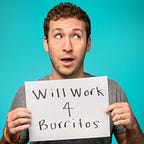Four Things I Learned Visiting a Neighborhood Pablo Escobar Helped Create
Our Spanish immersion program offers tours of Medellin that are off the beaten path. The idea is to speak to locals and see parts of Medellin that tourists don’t normally go. When they offered a trip to a neighborhood built on top of the old city dump and financed in part by Pablo Escobar, this seemed like a no-brainer so we signed up.
Here’s what I learned on our visit.*
*We were only in the Moravia neighborhood for about three hours. I spoke to a total of two people. With such limited data I will try as best as possible to avoid making any sweeping generalizations or sensationalizing what we observed.
Expected the Unexpected. Also Expect Haircuts
The flier for the tour said we’d be visiting the second most densely populated neighborhood in South America, that it was built on top of a garbage dump, and that Pablo Escobar had helped finance it.
What the shit???
Those three things in the same sentence together don’t even make sense. I was definitely intrigued but I wasn’t really sure what to expect.
Was it going to look like the shantytowns of Africa that I’d seen in magazine pictures? Or was it going to look more like inner city neighborhoods in the United States?
It turns out, the answer was somewhere in between.
In some parts I couldn’t believe how squalid the conditions were. In other parts, it didn’t look a whole lot different than the working-class neighborhood in Medellin where we have been staying for the past two weeks.
As we walked down the main street in the commercial district of the neighborhood, I was surprised to see how bustling it was. I got an sweet corn areipa-like treat from a street vender but you could get anything you could imagine from groceries, to Adidas, to cell phones. Also, you could get haircuts. As many as your heart desired. For real, in a one two-block stretch, I think every other store was a barbershop or peluquria.
If You Think You Have a Bad Morning Commute, it Could be Worse.
Medellin is shaped like a bowl. The city center and most of the jobs are situated on the valley floor. Yet most of the poorer neighborhoods are built far up into the hillsides.
So, if you work in the city center and live in the hills and take public transportation it takes a VERY long time to get to work each morning.
This is no different than the situation of the urban poor in America, so it shouldn’t have been a surprise to learn this, but it really hit home when our guide told us that the woman who cleans the Spanish school we’re attending (a incredibly kind woman who takes the time to help me each day with my Spanish) lives in one of the nearby neighborhoods. He said it takes her an hour and a half by bus to get to work in the morning and on days when traffic is bad, it can take up to 2.5 hours, each way.
Pablo Escobar is Still Respected In The Community
Given that Pablo Escobar was responsible for over 4000 deaths, countless bombings, kidnappings, and political assassinations it’s hard to believe that anyone in Colombia has any fond memories of him.
So I was surprised when our tour guide started off of the tour by saying sympathetically, “Pablo did some really bad things and some good things.”
In the 1980s when the government was completely ignoring the plight of the people in Moravia, Escobar came in and built 1000 new houses, a soccer field and a sanitation system. He did this in part because he felt a connection to the poor and in part because he was trying to win their votes in his run for Congress. Regardless of his his actual motives, the people in the community never forgot.
When you have been marginalized and completely dehumanized for so long by your government I can see why a community would embrace the first person of power who came in and listened to them. I imagine their admiration for Escobar has less to do with sanitation, soccer fields and new houses and more to do with feeling heard and respected. In other words, he made them feel human again.
It’s still hard for me to understand how they can overlook the brutal violence Escobar inflicted on their fellow countrymen, but I realize my view of the world comes from a very different vantage point.
A Brighter Future?
Our last stop of the day was at an arts and cultural center in the neighborhood where kids and adults can take classes in music, art, dancing, theater. We happened to be there on the 8th anniversary of the center and got to take in a children’s play that they were putting on.
My favorite part of the trip was the opportunity we had to talk with the kids at the center.
I spoke to a nine-year-old names Samual about drawing and school and animals (especially ratons y tortugas). When I asked him what he wants to be when he grows up, he told me “un abogado” (a lawyer).
While my natural instinct is to dissuade anyone from going down this dreadful path, in this case I told him I was a lawyer too and gave him a big thumbs up. Despite my misgivings about the profession, it made me happy to hear that Samual was growing up with big dreams towards the future. While I can’t say for certain I have to imagine that the kids in this community 20 years ago didn’t grow up with these same type dreams.
